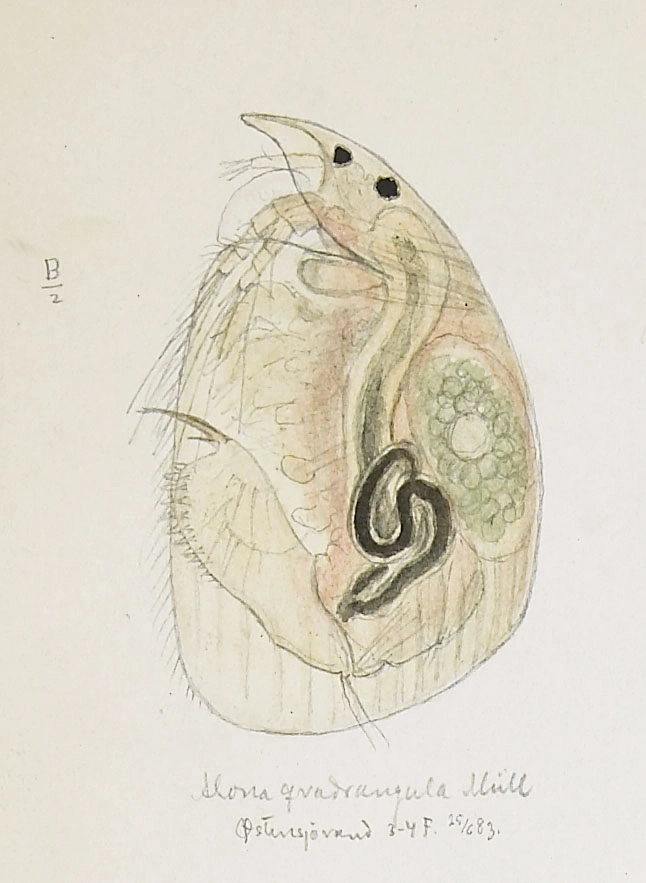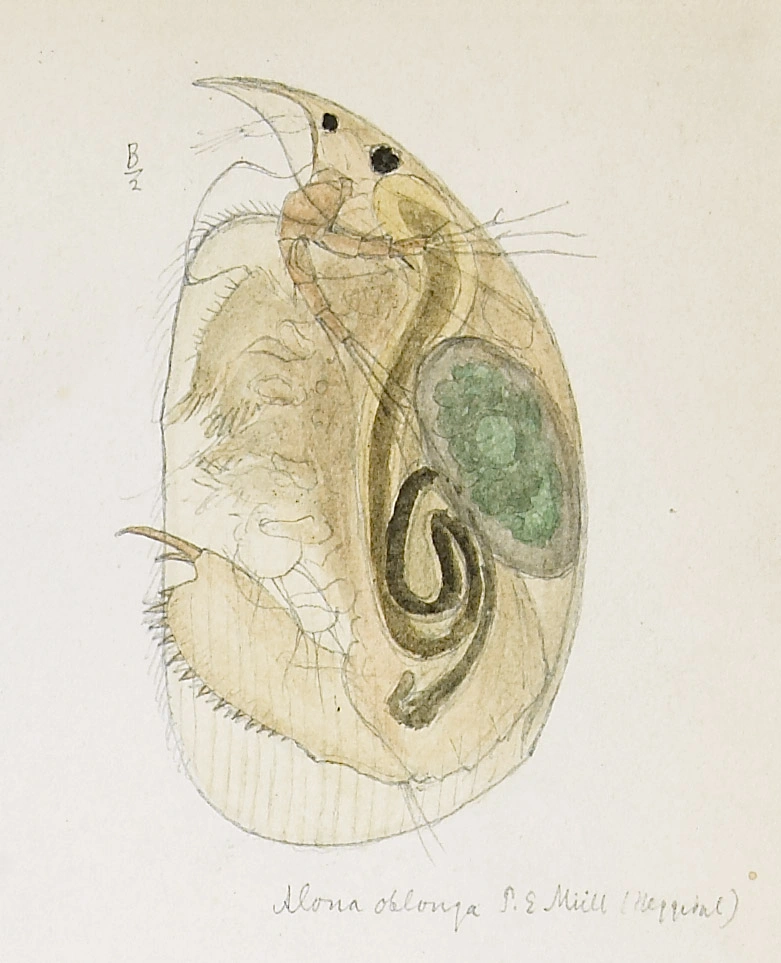Alona quadrangularis
The carapace in Alona quadrangularis is highest close to the posterior end. It is a quite common littoral chydorid, which is found in all parts of Norway. The species is rare in acid waters and characterized as moderate acid sensitive.
Key characteristics
Alona quadrangularis (female)
Alona quadrangularis is very close to A. affinis, however there are differences both in shape and morphology of the carapace. While the dorsal contour in the latter species is curved with the highest point across the middle, the carapace in A. quadrangularis is highest close to the posterior end. A. quadrangularis has three connected median headpores, while A. affinis has only two. Compared to A. affinis, A. quadrangularis also has no spinules on the basal spine of the postabdominal claw. Its colour varies from bright yellowish brown to dark reddish brown.
Female: Length 0.5–1.3 mm
Male: Length 0.5–0.9 mm
Ecology and distribution
A. quadrangularis is a littoral chydorid which occurs in about 3 % of the water bodies, and is found in all parts of Norway. It occurs randomly from sea level and up to 1379 m a.s.l. in localities of all sizes and on a wide variety of substrates. The species is rare in acid waters, and except for one record at pH<5 it has only been found in water bodies having pH between 4.6 and 7.9. The highest frequency occurs between pH 6.0 and 7.9. A. quadrangularis is most commonly found in electrolyte rich water (>2.0 mS/m).
| Vitenskapelig navn | < 4,5 | 4,5 - 4,9 | 5,0 - 5,4 | 5,5 - 5,9 | 6,0 - 6,4 | 6,5 - 7,0 | 7,0 - 7,4 | > 7,5 |
|---|---|---|---|---|---|---|---|---|
| 0 | 0,4 | 0,8 | 1,2 | 2,8 | 4,4 | 5,5 | 5,6 |
| Vitenskapelig navn | < 1,0 | 1,0 - 1,4 | 1,5 - 1,9 | 2,0 - 2,9 | 3,0 - 3,9 | 4,0 - 4,9 | 5,0 - 6,9 | 7,0 - 9,9 | > 10,0 |
|---|---|---|---|---|---|---|---|---|---|
| 1,1 | 0,8 | 1,2 | 3,3 | 2,1 | 3,1 | 7,1 | 7,4 | 5,3 |
| Vitenskapelig navn | < 0,01 | 0,01 - 0,09 | 0,1 - 0,9 | 1,0 - 9,9 | 10,0 - 99 | 100 - 999 | > 1000 |
|---|---|---|---|---|---|---|---|
| 1 | 2 | 1,6 | 3,1 | 3,5 | 5,8 | 4,3 |
| Vitenskapelig navn | < 100 | 100-299 | 300-499 | 500-699 | 700-999 | >1000 |
|---|---|---|---|---|---|---|
| 5 | 4,7 | 1,7 | 1,7 | 2,2 | 1,8 |
Look-alikes
Alona affinis

